After being banned from Massachusetts, Anne Hutchinson and her followers move to Aquidneck Island and create the towns of Portsmouth and Newport.
26 minutes | 1637-1639
Hear About:
📜Anne Hutchinson's battle with the orthodox Puritan leaders of Massachusetts
📜Where the name "Rhode Island" might have originated from
📜The founding of Portsmouth and Newport
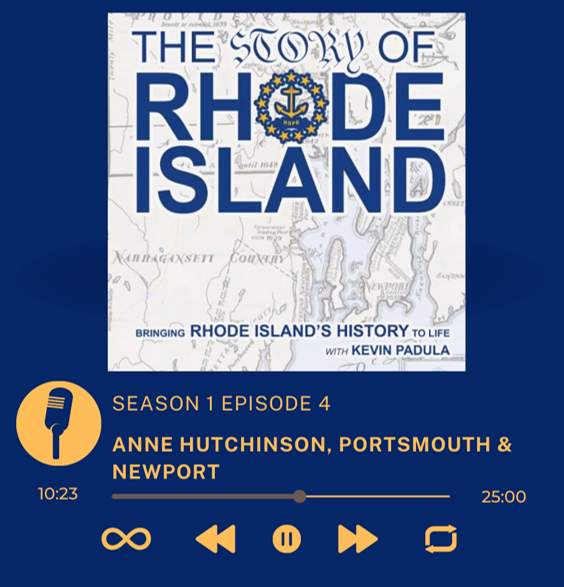
Anne Hutchinson
In 1634, Anne Hutchinson took part in the Great Migration and moved to Massachusetts. By 1637, she developed a devout following in Boston when people realized she had a deep understanding of the Bible. However, she was eventually banned from Massachusetts when she began criticizing the colony's ministers.
Picture Source: 08 February 2021, world history
William Coddington
William Coddington was Anne Hutchinson's most powerful follower. He helped Anne Hutchinson's followers purchase Aquidneck Island from the Narragansetts in 1638 and helped them found the towns of Portsmouth and Newport.
Samuel Gorton


It was at Pettaquamscutt Rock where Anne Hutchinson's followers purchased Aquidneck Island from Canonicus and Miantonomi in 1638. For the next few decades after that purchase, numerous other land acquisitions are made at this very rock as well, making it one of the most important locations of 17th century Rhode Island.


Founders Park | Portsmouth, RI
After purchasing Aquidneck Island from the Narragansetts at Pettaquamscutt Rock, Anne Hutchinson's followers founded the town of Portsmouth at the northern end of the island. The location of where the town was founded is known as Founders Park today.
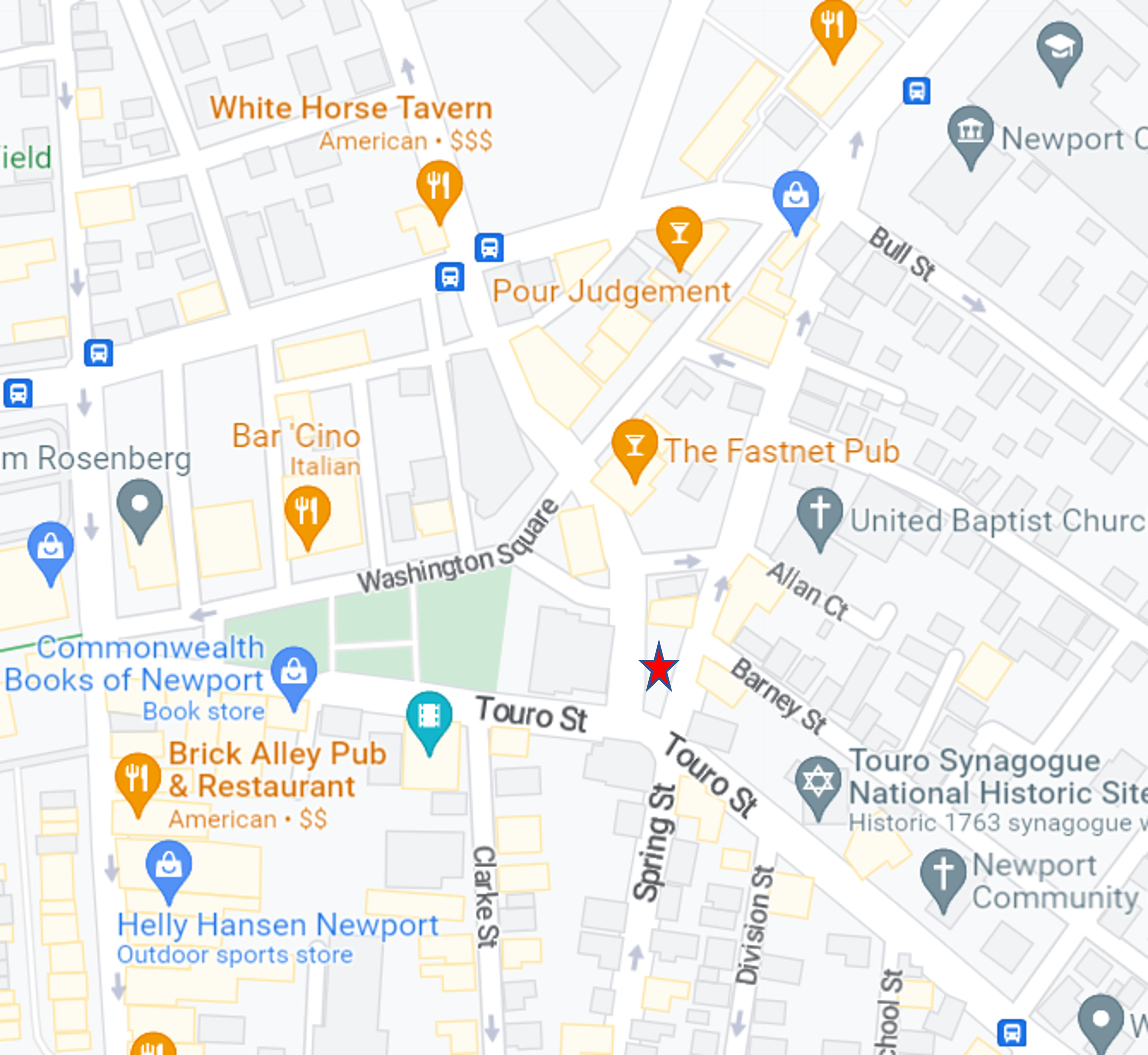
Spring Park | Newport, RI
In the 17th century there was a spring at the present-day intersection of Touro and Spring Street. A spring was a key feature of any newly built settlement as they provided the inhabitants fresh water. It was at this location where the town of Newport was founded. Thanks to efforts by the town's government, there are plans to have a park built at this intersection by the summer of 2023.
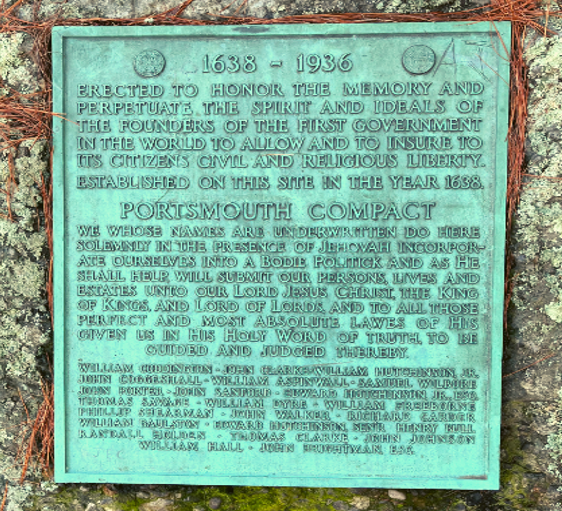
Before fleeing Massachusetts for Narragansett territory, more specifically Aquidneck Island, Anne Hutchinson's followers signed a document and united as a new body politic. The document they signed is known as the Portsmouth Compact today.
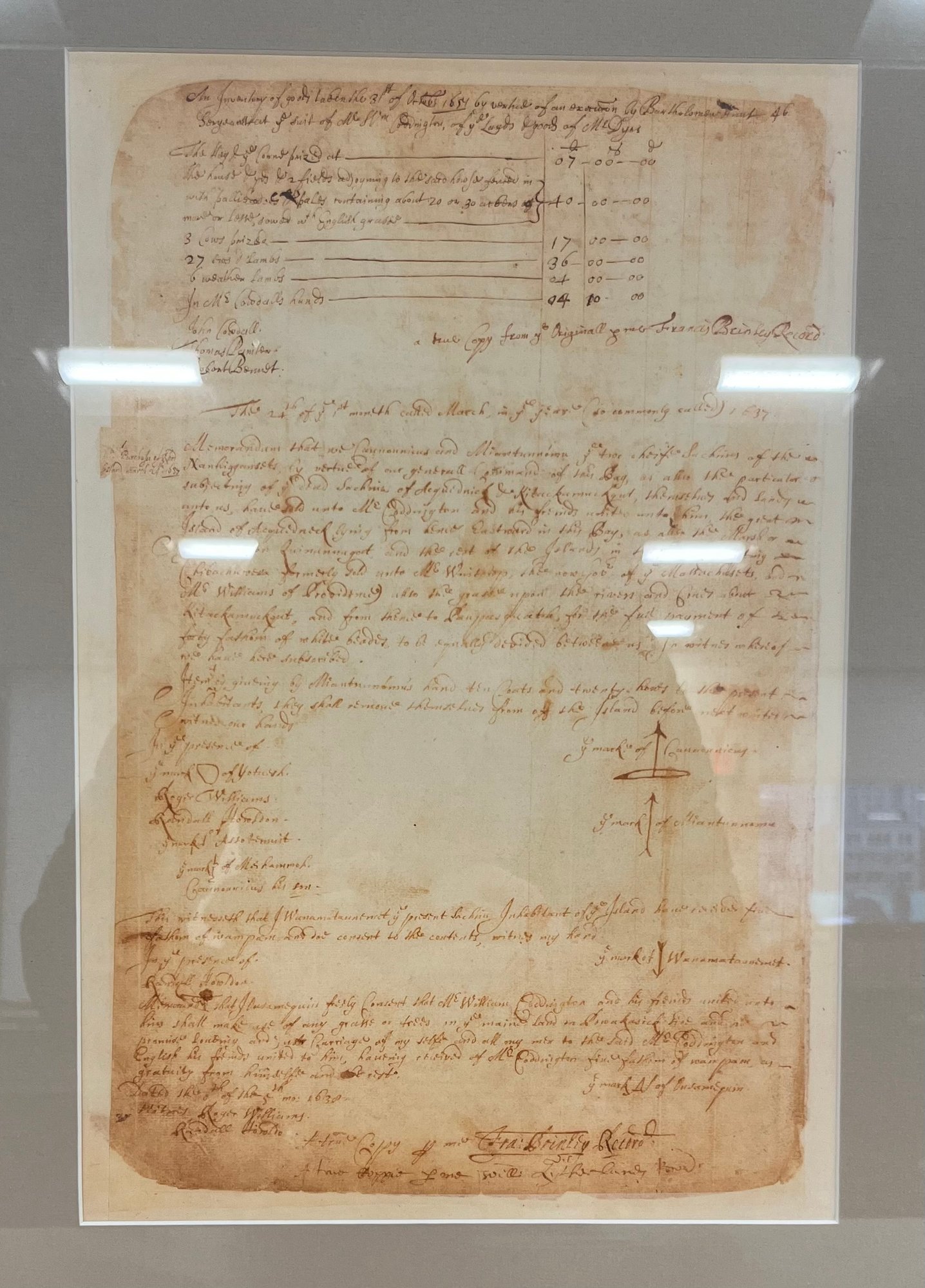
Towards the middle right hand side of the first picture you can see the marks of Narragansett Sachems Canonicus and Miantonomi. Canonicus' being a bow and arrow and Miantonomi's being an arrow. To the left of those marks are the signatures of the men who acted as the witnesses of the purchase, the first one being Roger Williams.
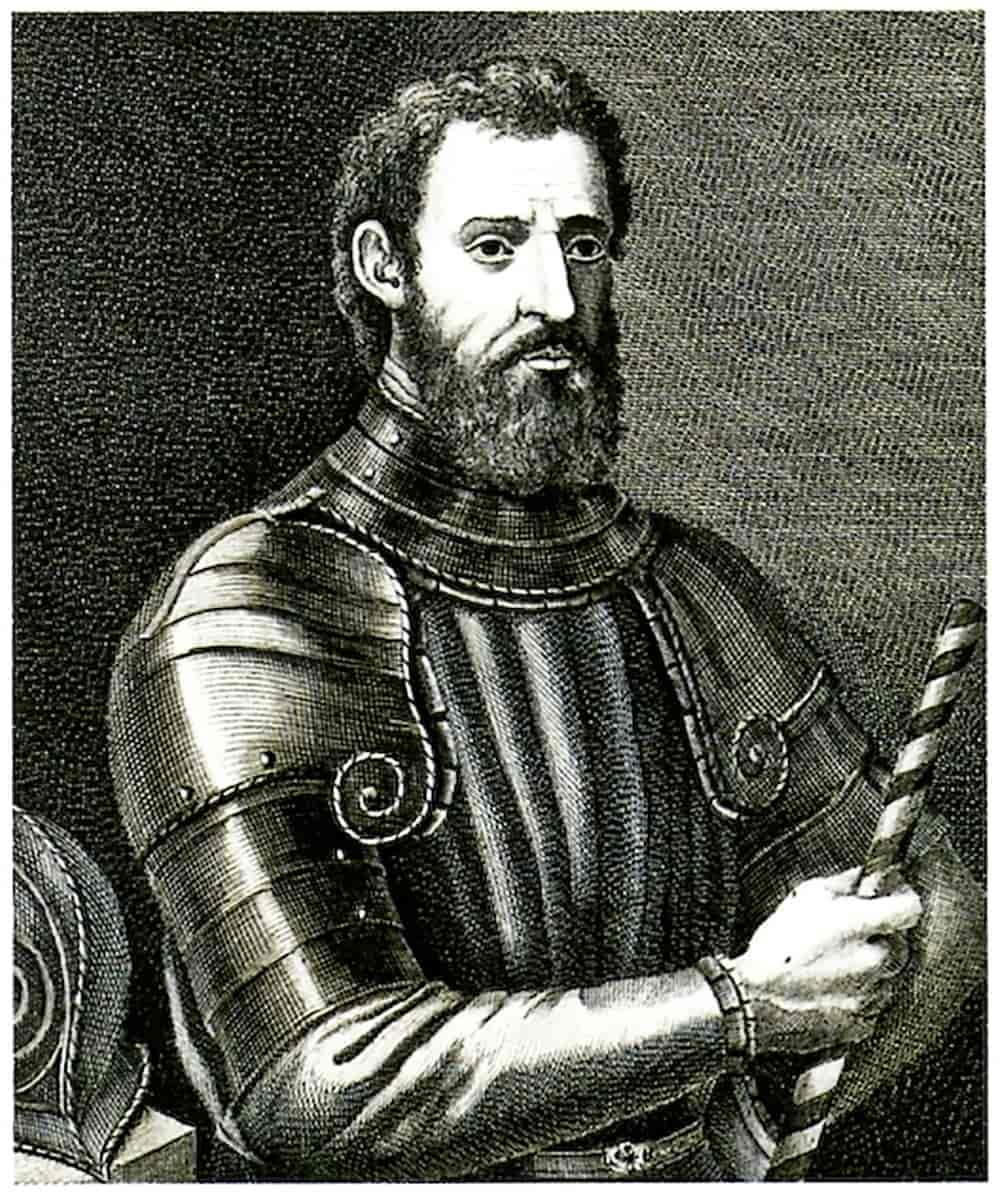
Giovanni da Verrazzano Meets the Narragansett People in 1524
Over 100 years before Roger Williams founded the town of Providence, Giovanni da Verrazzano visited the Narragansett Bay. When he arrived in the bay he was greeted by "20 boats full of people" of the Narragansett Nation. Verrazzano was impressed by the beauty of their people. In his letter to the King of France he states "Among them were two kings, who were as beautiful of stature and build as I can possibly describe...These people are the most beautiful and have the most civil customs that we have found on this voyage. They are taller than we are...Their women are just as shapely and beautiful; very gracious, of attractive manner and pleasant appearance". Some believe the name "Rhode Island" originated from Verrazanno's voyage to Narragansett Bay. More on that in the section below.
Picture Source: Store norske leksikon, 2023, Erik Bolstad


Origins of the Name "Rhode Island"
Have you ever wondered why Rhode Island used to be called "Rhode Island and Providence Plantations"? It's because in the 17th & early 18th century Aquidneck Island was called "Rhode Island" and the mainland towns (Providence and Warwick) were known as the "Providence Plantations". Hence, the joint areas were called "Rhode Island and Providence Plantations".
We know where the name "Providence" comes from but what about "Rhode Island"? Unfortunately, nobody knows for sure but there are two theories:
- One theory states that it's tied to states that it’s tied to the Italian explorer Giovanni da Verrazzano and his exploration of Narragansett Bay in 1524. On his journey, Verrazzano noticed a triangle shaped island that looked to be the same size as the Greek Island of Rhodes. Some historians believe that early English settlers thought Verrazzano was referring to Aquidneck Island which inspired them to call it Rhode Island.
- Some believe that it’s tied to the Dutch explorer Adriaen Block and his 1614 exploration of the New England coastline. On his journey, Block noticed a reddish island at the mouth of the Narragansett Bay. Since the word for “red island” in Old Dutch is pronounced Roodt-aye-land it is theorized that the name was eventually turned into Rhode Island.
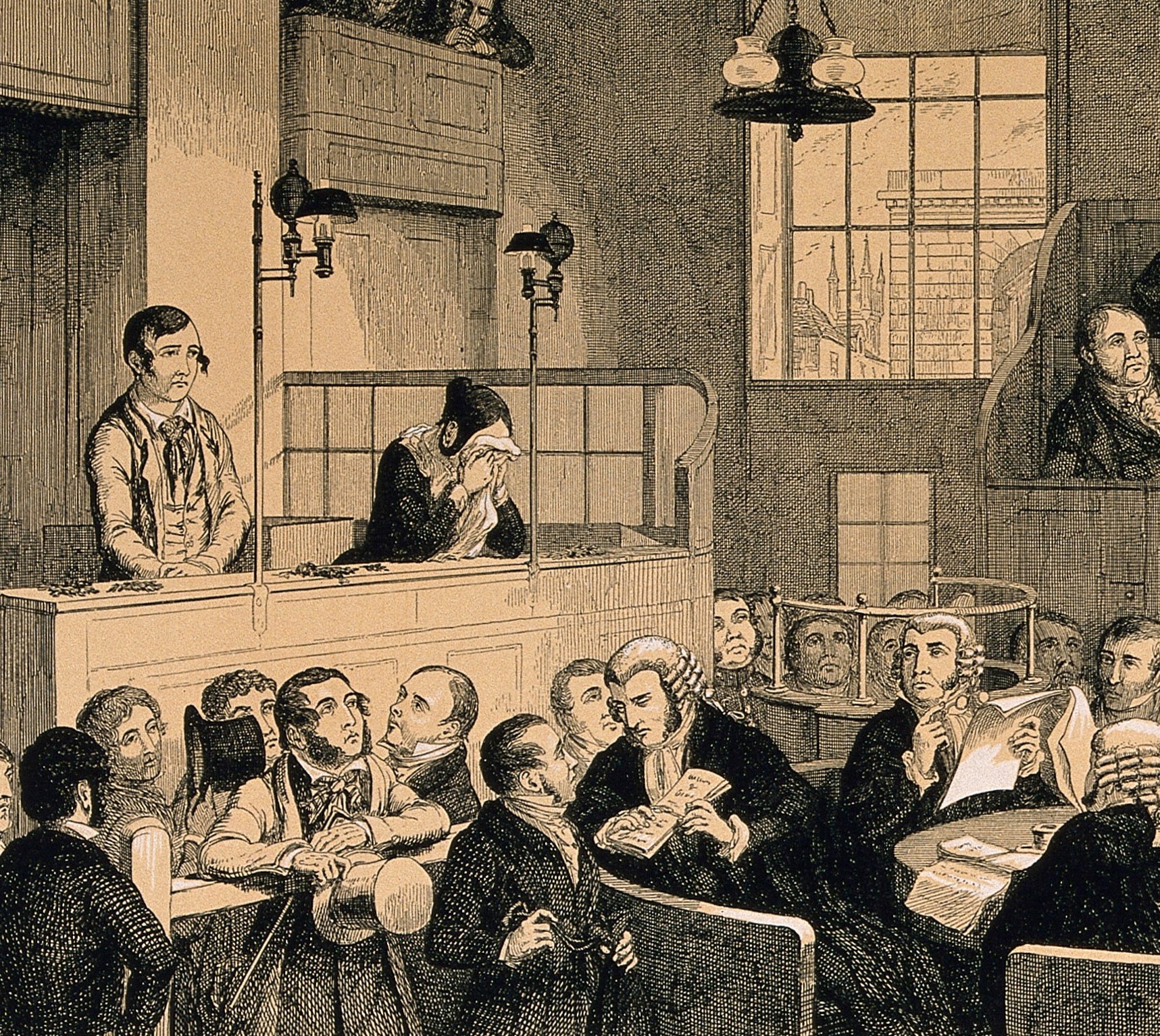
When Anne Hutchinson was summoned to court in 1637 she was still nursing her youngest child and pregnant with her 13th child. The leaders of Massachusetts didn't make it any easier on her by holding her trial in Cambridge instead of Boston, hoping to prevent as many of her followers in Boston from attending the trial as possible. By the time she completed the 2 mile trek to Cambridge on a freezing November morning she was exhausted. This took such a toll on her body that she fainted half way through her trial.
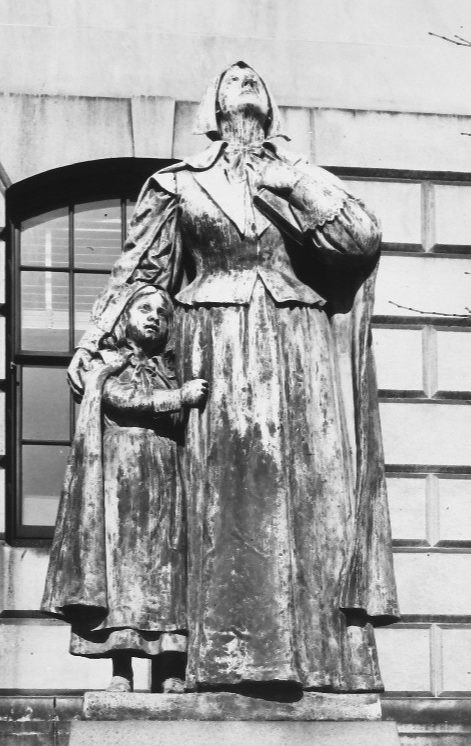
Anne Hutchinson was not a feminist
In the most basic sense of the word, Anne Hutchinson was not a feminist. She made no effort to disrupt the social structures that were setup in Massachusetts. Instead, she simply wanted to ensure that the correct interpretation of the bible was being shared. However, her bravery, brilliance, and ability to make her point heard at a time when women were treated as second class citizens acts as an inspiration to women to this very day.
Picture Source: Statue of Anne Hutchinson with Descriptive Plaque, East Wing of Massachusetts State House, MIT-Libraries, 2008
- American Jezebel: The Uncommon Life of Anne Hutchinson, the Woman Who Defied the Puritans by Eve LaPlante
- John Clarke and His Legacies: Religion and Law in Colonial Rhode Island 1638 - 1750 by Theodore Dwight Bozeman and Sydney V. James
- Colonial Rhode Island: A history by Sydney V. James
- Fat Mutton and Liberty of Conscience: Society in Rhode Island, 1636-1690 by Carl Bridenbaugh
- Roger Williams and the Creation of the American Soul: Church, State, and the Birth of Liberty by John M. Barry
- God, War, and Providence: The Epic Struggle of Roger Williams and the Narragansett Indians Against the Puritans of New England by James A. Warren
- Rhode Island's Founders: From Settlement to Statehood by Patrick T. Conley
- The Puritan Dilemma: The Story of John Winthrop by Edmund Morgan
- Changes in the Land: Indians, Colonists, and the Ecology of New England by William Cronon
- Manitou and Providence: Indians, Europeans, and the Making of New England, 1500-1643 by Neal Salisbury
- Roger Williams: The Church and the State by Edmund Morgan
- Rhode Island: A History by William G. McLoughlin
- Spring Park Project Moves Forward by Rob Duca